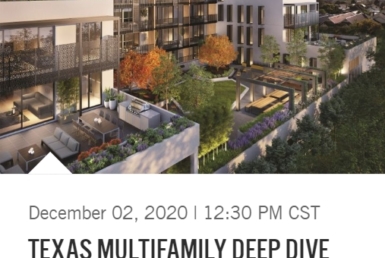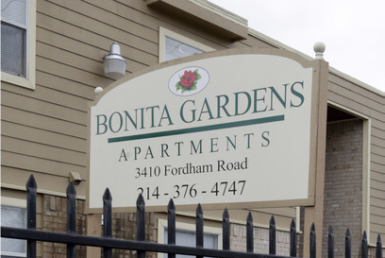What Obstacles are Looming Over Multifamily Development?

This article was written by the U.S. Colliers Editorial Board, whose mission is to produce new and noteworthy commercial real estate thought leadership pieces to create conversation around proactive content. The Editorial Board focuses on CRE trends in the United States, and is comprised of Colliers marketing, research, communication and service line leaders.
All signs point to an economy that is headed to, at the very least, a slowdown. And while this tends to make most industries nervous, it typically does not have the same effect on the multifamily sector of commercial real estate. Historically speaking, this segment tends to grow, rather than contract, in economic downturns. Not to mention with rising interest rates, renting an apartment may become more appealing for people than owning a home. But is it all good news on the multifamily housing front?
Well, not exactly. Multifamily developments are feeling the strings tighten too. In some markets, it’s due to physical land constraints, while in others, it is more of a human-created constraint.
Make Sure You Have the Land to Build
In a traditional sense, land constraints are geographic elements that impede the development of buildings. Whether mountains physically cut off the supply of land for development, like in Seattle, or oceans and lakes draw the line of where development stops, like in Manhattan or Salt Lake City, these boundaries are unavoidable. But there are other types of land constraints regardless of geographic hindrances that can impact where multifamily development occurs.
In today’s world of skyrocketing housing prices and rent, there is undoubtedly an affordable housing crisis. Cities are trying to avert this crisis by instituting ordinances and zoning that require a portion of all new development be “affordable.” In doing so, other land constraints have arisen. For instance, in Portland, OR, available land to build on is already quite limited. Not only because of the surrounding mountains and water, but also because of the city’s urban growth boundary (UGB), initially drawn up in 1980. The policy’s intent was to create a boundary to protect farms and forests from urban sprawl and promote the efficient use of land, public facilities and services inside the boundary.
Combine this with the implementation of Portland’s Inclusionary Housing policy in 2017 and it adds up to a city where multifamily developments are forging ahead in a tumultuous environment. The uncertainty created by the policy’s impending implementation created an artificial boost in supply as they went from approximately 5,000-6,000 units annually in for permit up to nearly 19,000 units submitted for permit in an attempt to beat the affordable housing requirements. Since the policy’s implementation 24 months ago, only a little more than 2,260 new housing units have been submitted for permit. Sean Worl, senior associate in Colliers’ Portland office is, however, optimistic. “Although the environment is dynamic, the consensus for Portland is still favorable given its barriers to entry and high quality of life. Portland has finally been acknowledged as one of the West Coast’s Major metros of which it is by far the most affordable.”
The Human Element
Other markets aren’t limited by land. When the core gets to capacity and/or the yield isn’t attractive in the center of town, the developments can easily migrate outside of the perimeter. Cities like Houston, Chicago and Atlanta are not constrained by geographical boundaries. The land to build on is sprawling and because of very real national trends like the affordability crisis, demand will inevitably follow that supply. But just because there is land, does that mean smooth sailing for multifamily developments?
One challenge that multifamily developments face is the stigma around apartments and how crime seems to be higher in these high-multifamily areas. This is most definitely a myth, albeit a widely-held belief. A study conducted by the Arizona Multifamily Housing Association concluded that the perception of more crime around multifamily communities comes from counting police calls by address. An apartment property with 100+ units at the same address may be wrongly compared to one single family residence. Per the Arizona Multifamily Housings study, “When police data is analyzed on a per unit basis, the rate of police activity in apartment communities is no worse than single family subdivisions, and in many cases, lower than single family residential areas.”
Growth is also being constrained by school boards, with the perception of maintaining quality education. Opponents to multifamily housing also argue that apartments contain more school-aged children than single family homes do and puts a greater burden on local school districts. However, this theory is proven incorrect when analyzing the numbers. On average, 100 single family owner-occupied homes include 51 school-aged children. In comparison, apartments—which are more attractive to single people, couples without children and empty nesters—have a much lower ratio as a result. 100-unit apartment complexes average just 31 children. The gap widened when taking new construction into account (64 children per 100 single family homes compared to just 29 per 100 new apartment units).
There is also the theory that housing values decline when more multifamily is developed around them. According to a U.S. Census bureau study conducted in 2000, taking a holistic view at home value and appreciation close to multifamily developments. The study targeted multifamily complexes in “working communities” (communities with predominantly low-to-moderate income levels) and compared them to single family residential homes in the same neighborhoods. The average value of single-family residential homes was highest in working communities with the most multifamily units, in comparison to communities with only single-family residential properties having lower property values.
Construction’s Rising Costs
However, the most significant barrier to new multifamily development is the rising cost of construction across the U.S. The high cost of construction is most largely attributed to the lack of skilled labor—it is, by far, the biggest line item of any construction expenses. Because of this lack of skilled labor, construction has slowed dramatically, and thus made it more expensive. The Labor Department reported that average hourly earnings for all employees in construction rose 3.9% in 12 months through October 2018, representing the fastest pace in nearly 10 years per Ken Simonson, the chief economist at the Associated General Contractors of America.
At the same time, land owners, especially in urban and desirable suburban locations, continue to increase land prices, seizing on the increased demand for multifamily housing. And, because contractors are having a more difficult time earning a profit, they are raising their prices to offset increases, but can’t seem to raise them fast enough. The producer price index (a weighted average of all goods and services used in construction) rose by 0.6% in October, following a 0.2% gain in September, bringing the 12-month total increase to 6.6%.
A final consideration is the cost of fuel. The producer price index for diesel fuel exploded by 34% over the 12 month period ending in August 2018, representing the largest increase for any construction material over the period, even though diesel fuel is not one of the goods impacted by tariffs. Contractors use diesel fuel to power equipment, trucks and cranes. As a result of the rising costs of construction material, and diesel fuel hindering transportation, construction materials are not arriving on time, according to Marc Padgett, president of Summit Contracting, a multifamily general contractor.
So, what does the future hold?
While there is no one indicator on how the multifamily sector will combat these obstacles, there are a few things that we can anticipate with a level of confidence. Major markets’ governments will continue to develop policies to help combat the affordability crisis, multifamily developments will try to work around these policies, and where possible, they will continue to migrate out to suburban areas and secondary/tertiary markets where yields are higher, and land is more available.
And as far as the attitudes towards multifamily housing and how it impacts the communities they reside in? Stay tuned—we’ll expound on the myths around multifamily housing in a follow-up piece.



